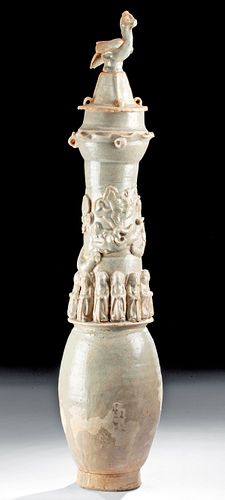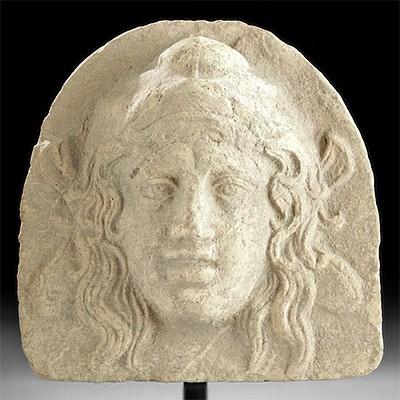Chinese Song Dynasty Qingbai Porcelain Funerary Urn
Lot 118
About Seller
Artemis Gallery
686 S Taylor Ave, Ste 106
Louisville, CO 80027
United States
Selling antiquities, ancient and ethnographic art online since 1993, Artemis Gallery specializes in Classical Antiquities (Egyptian, Greek, Roman, Near Eastern), Asian, Pre-Columbian, African / Tribal / Oceanographic art. Our extensive inventory includes pottery, stone, metal, wood, glass and textil...Read more
Categories
Estimate:
$1,600 - $2,400
Absentee vs Live bid
Two ways to bid:
- Leave a max absentee bid and the platform will bid on your behalf up to your maximum bid during the live auction.
- Bid live during the auction and your bids will be submitted real-time to the auctioneer.
Bid Increments
| Price | Bid Increment |
|---|---|
| $0 | $25 |
| $300 | $50 |
| $1,000 | $100 |
| $2,000 | $250 |
| $5,000 | $500 |
| $10,000 | $1,000 |
| $20,000 | $2,500 |
| $50,000 | $5,000 |
| $100,000 | $10,000 |
| $200,000 | $20,000 |
About Auction
By Artemis Gallery
Feb 27, 2020
Set Reminder
2020-02-27 10:00:00
2020-02-27 10:00:00
America/New_York
Bidsquare
Bidsquare : VARIETY SALE | Antiquities & Ethnographic Art
https://www.bidsquare.com/auctions/artemis-gallery/variety-sale-antiquities-ethnographic-art-4920
Around the world & back in time - be amazed at the treasures you will find. Antiquities from Egypt, Greece, Italy and the Near East, Asian, Pre-Columbian, African / Tribal / Oceanic, Native American, Spanish Colonial, Russian Icons, Fine Art, much more! Artemis Gallery info@artemisgallery.com
Around the world & back in time - be amazed at the treasures you will find. Antiquities from Egypt, Greece, Italy and the Near East, Asian, Pre-Columbian, African / Tribal / Oceanic, Native American, Spanish Colonial, Russian Icons, Fine Art, much more! Artemis Gallery info@artemisgallery.com
- Lot Description
East Asia, China, Song Dynasty, ca. 960 to 1270 CE. A fine example of a Qingbai ware funerary jar (also sometimes known as Yingqing, meaning "shadow green"), used in southern China during this period to hold grain and other offerings inside of tombs. It has an elongated body, with a smooth lower half that stands on a round foot. The upper half has applied figures: twelve robed, abstract humans form a border above which is a soaring dragon. These figures are applied to the thin, otherwise smooth neck; above that is a with a wide, bowl-like mouth with an applied wavy border around its center and loops for suspension attached to the border. A delicate lid capped by a phoenix or similar bird perches atop the vessel; this also has four loops for suspension, as well as for tying the lid onto the vessel. Qingbai ware is arguably the first mass-produced type of porcelain, used most for burial wares and exports. The distinctive color of the glaze is a result of using pine wood as fuel in the kilns, creating a reducing atmosphere. Size: 5.4" W x 26.5" H (13.7 cm x 67.3 cm)
Provenance: ex-private Delaware, USA collection acquired before 1990
All items legal to buy/sell under U.S. Statute covering cultural patrimony Code 2600, CHAPTER 14, and are guaranteed to be as described or your money back.
A Certificate of Authenticity will accompany all winning bids.
We ship worldwide and handle all shipping in-house for your convenience.
#151910The vessel and lid are both intact. There is some wear to the glaze around the lower body. Deposits on interior. Craquelure on the glaze, especially on the applied figures.Condition
- Shipping Info
-
All shipping is handled in-house for your convenience. Your invoice from Artemis Gallery will include shipping calculation instructions. If in doubt, please inquire BEFORE bidding for estimated shipping costs for individual items.
-
- Buyer's Premium



 EUR
EUR CAD
CAD AUD
AUD GBP
GBP MXN
MXN HKD
HKD CNY
CNY MYR
MYR SEK
SEK SGD
SGD CHF
CHF THB
THB
















